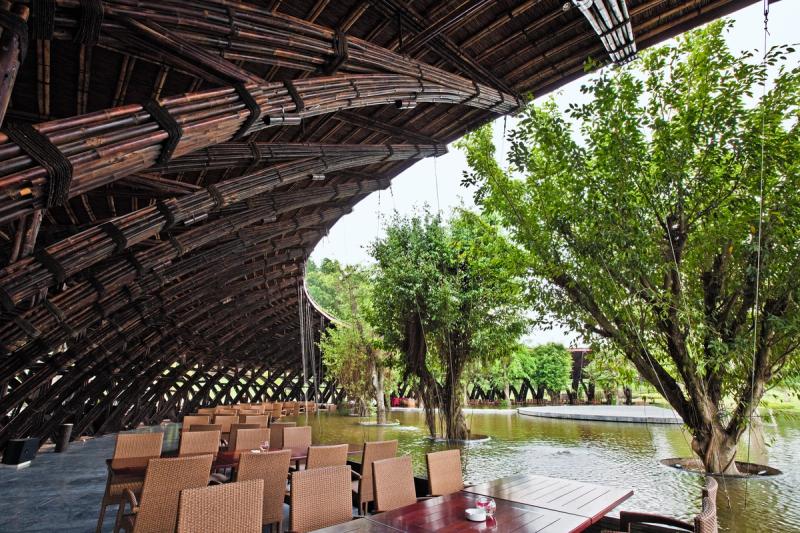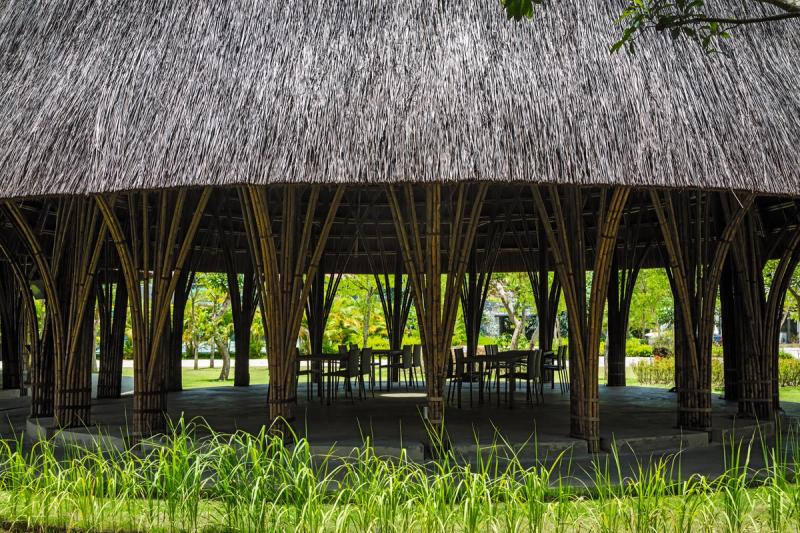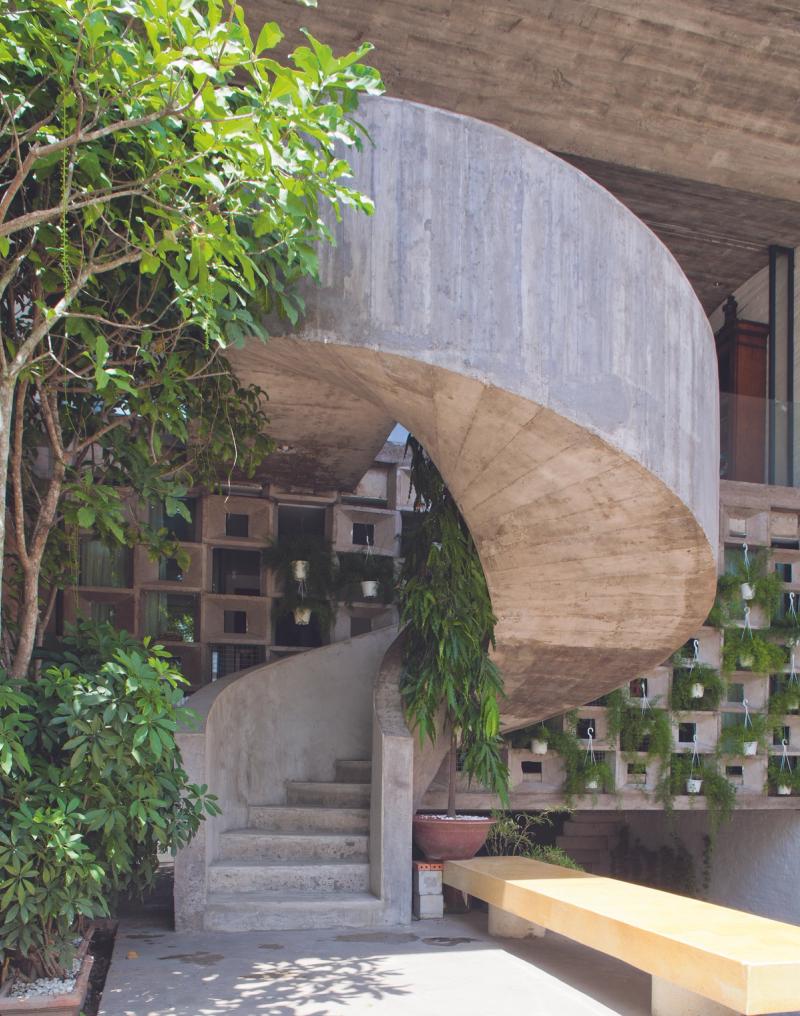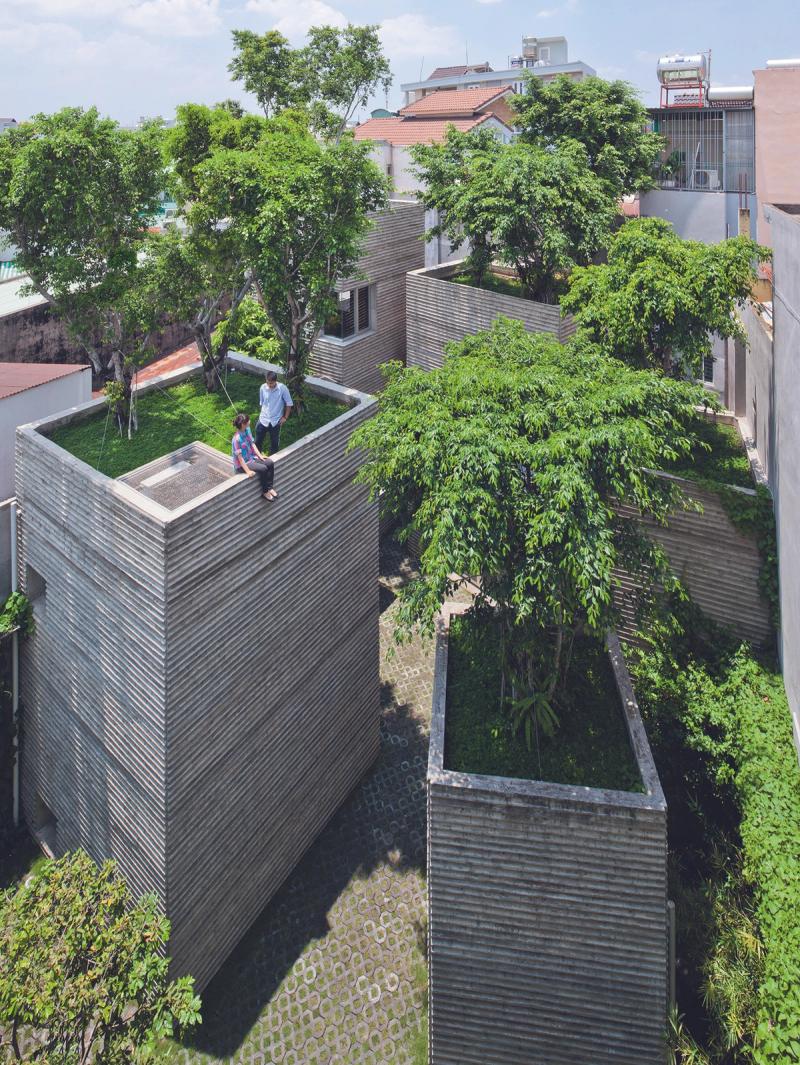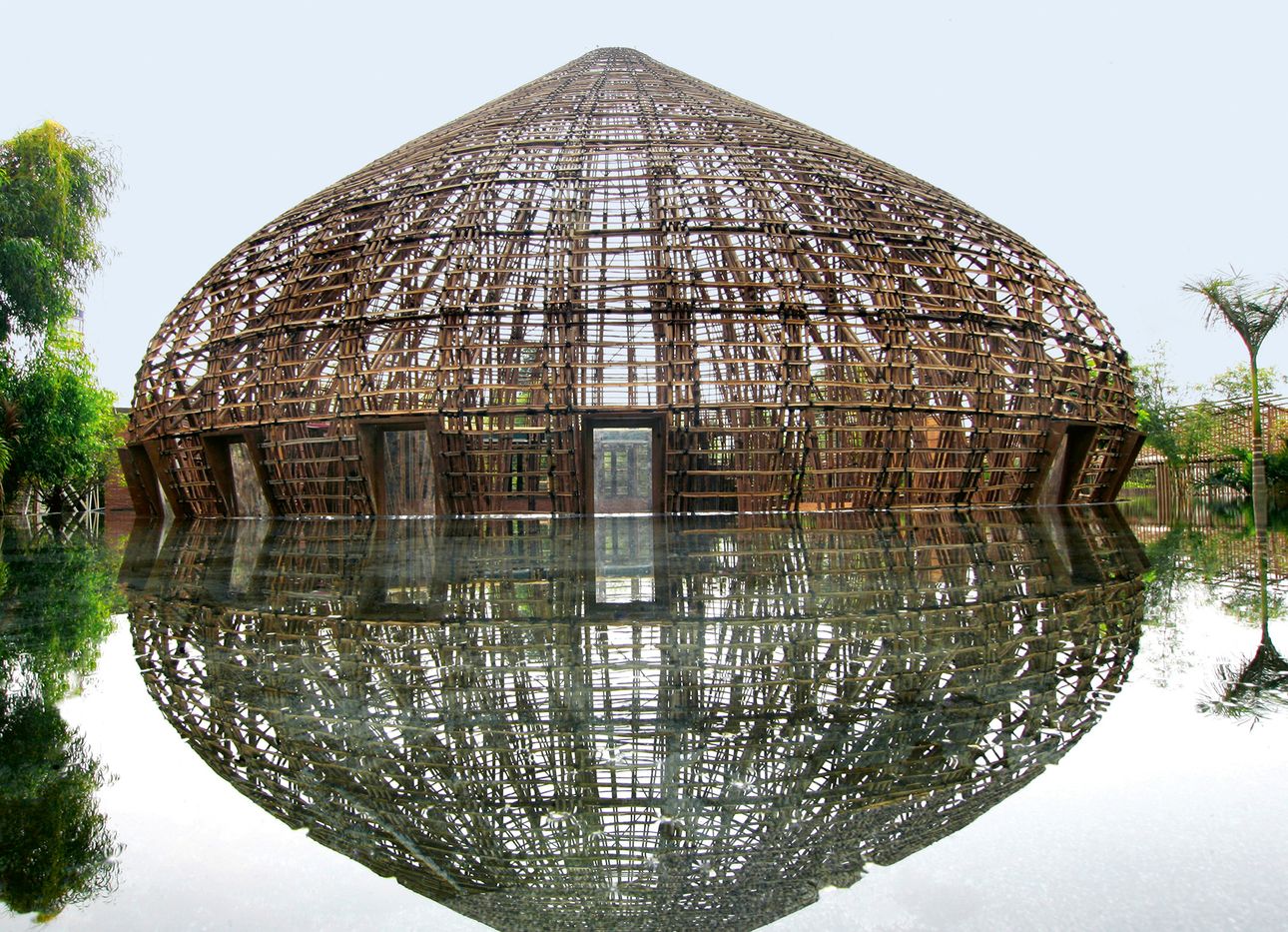
In Vietnam, Võ Trọng Nghĩa Merges Nature and Architecture
Lush fruit trees bursting over a roof. A canopy of plants covering a facade. Intricate bamboo constructions spiraling from floor to ceiling. These are just some of the many inventive design approaches of Vietnamese architect Võ Trọng Nghĩa, best known for melding nature with architecture to minimize pollution and instill a sense of calm. In a new two-volume book, Võ Trọng Nghĩa: Building Nature (Thames & Hudson), readers get an inside look into how the celebrated architect has embraced two core themes throughout his career: “green” architecture and bamboo as a building material.
Titled “Green” and “Bamboo,” respectively, each volume starts with a short introduction by architectural historian Philip Jodidio (who also recently authored a book on homes by the Japanese architect Tadao Ando) and is filled with impressive illustrations that demonstrate Nghĩa’s skill at merging natural environments with architecture. Born in a small village in Vietnam’s Quang Binh Province in 1976, Nghĩa studied architecture at the Nagoya Institute of Technology and the University of Tokyo before going on to start Võ Trọng Nghĩa Architects in 2006. With offices in Ho Chi Minh City and Hanoi, the firm employs an innovative design approach that involves combining traditional Vietnamese building techniques, such as complex bamboo frameworks and thatch roofing, with natural elements and modern materials. Leading with “green” architecture and sustainable building practices, Nghĩa’s work is also heavily influenced by Buddhist teachings and his meditation practice.
Whether with the Wind and Water Bar, one his earliest forays into using bamboo structures in his building projects, or with House for Trees, a soulful series of residences incorporating greenery into the building, Nghĩa’s projects featured in Building Nature give readers a sense of his idiosyncratic, wholly original architectural language. “Architecture is about the quality of space and details,” Nghĩa says in the book. “The building itself can be compared to an ecosystem in which people live. Being in a building should be like being in a park, or even a forest.”

